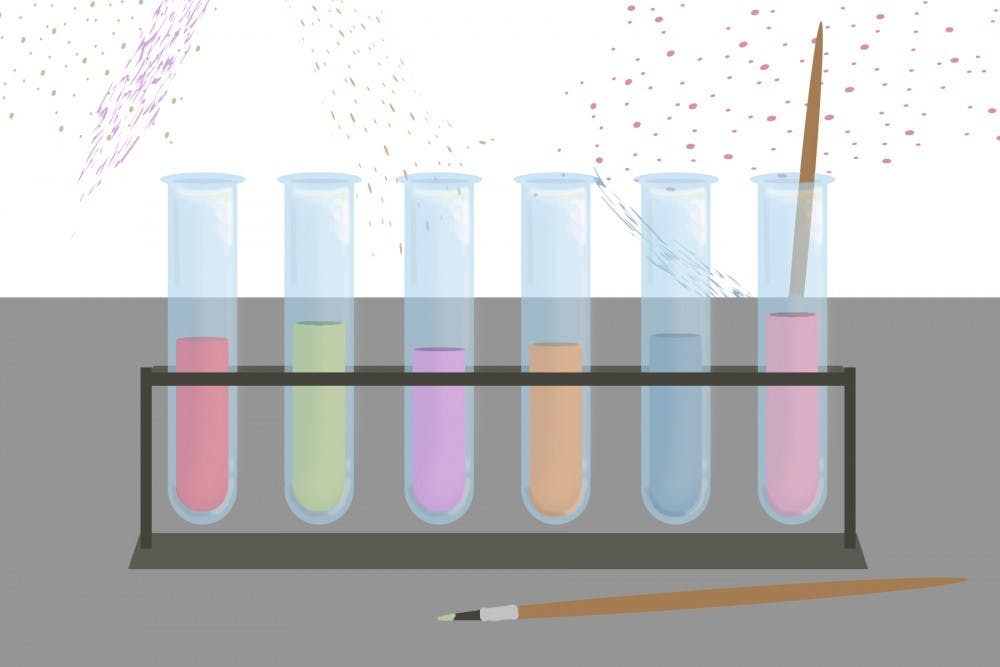At a university that requires first-year freshmen to live among others with the same major, some are concerned that there is no room for interdisciplinary collaboration. For both arts and STEM majors, the lack of exposure to other areas of study may prove to be a barrier.
Callan Keesling, an exploratory engineering freshman, said that in his experience, engineering students are not exposed to the arts unless they specifically seek it out. He said his required courses list does not contain any humanities classes, aside from elective credits.
The closest his studies take him to the arts is a semester or two of English, Keesling said.
Keesling said he and many of his peers don’t even know where the art buildings on campus are. He says his fellow engineers rarely even mention art, having hobbies that are primarily science or technology-related.
"Engineers, in particular, tend to stay in their major cliques and on their part of campus," Keesling said.
He felt this seclusion was negatively impacting his ability to be a good engineer.
“People don’t think engineering is creative, they think it’s utility-based — but when you are directing people, or coming up with solutions, you need to be creative and empathetic and understand humanity," Keesling said. "In this way, I think not being exposed to the arts is detrimental.”
Theater and communications freshman Molly Bishop, similarly to Keesling, said she's never been to Noble Library or an engineering building. Bishop said she also views the few required science courses as something to just "get out of the way" over the summer.
However, Bishop said that with more science training, her ability to create new and diverse art would expand.
“Learning scientific things can allow us to go about art in new, different ways,” Bishop said. “For example, anatomy classes are wonderful for people who sing or dance — at the end of the day, one of an artist’s main tools is their body."
Dr. Dove-Viebahn is a Barrett, The Honors College professor and is currently teaching an interdisciplinary course called Media, Community and Identity Politics. She said that interdisciplinary classes and events are vital for enabling students to fully access topics and subject materials.
"In majors sometimes, you become really focused on just what you're doing," Dove-Viebahn said. "It's easy to forget that there are ways in which other people, other majors are dealing with the same subjects, but from different perspectives than you."
While specific STEM and liberal arts majors remain a major focus, ASU does offer several interdisciplinary degrees and programs of study.
The School of Arts, Media, and Engineering aims to be a cross-disciplinary school that encourages students to explore how humans learn, create and communicate in the 21st century, according to the school’s website.
ASU also offers a arts degree in interdisciplinary studies, which the University's page for the degree said “provides students the intellectual tools to ... prepare for careers and graduate programs that increasingly cross disciplinary boundaries."
There are several other degrees available which make a point to incorporate technology, culture, and art, such as the digital culture major.
For students not willing to change their major, there are also several interdisciplinary clubs on campus that can offer cross-discipline collaboration and exposure.
Almost every single student organization on campus is open to students of any major, but there are also specific interdisciplinary clubs, like Fuse: The Blending of the Arts.
Fuse was started by an engineering freshman, Ryan Kemmer, who said he wanted to share his love of music with others and give everyone who wanted to make art, regardless of major, a forum to do so.
Other notable interdisciplinary organizations include Arts, Media + Engineering Listening Group and the Interdisciplinary Arts and Performance club.
Reach the reporter at cagoldin@asu.edu or follow @auruming on Twitter.
Like The State Press on Facebook and follow @statepress on Twitter.




